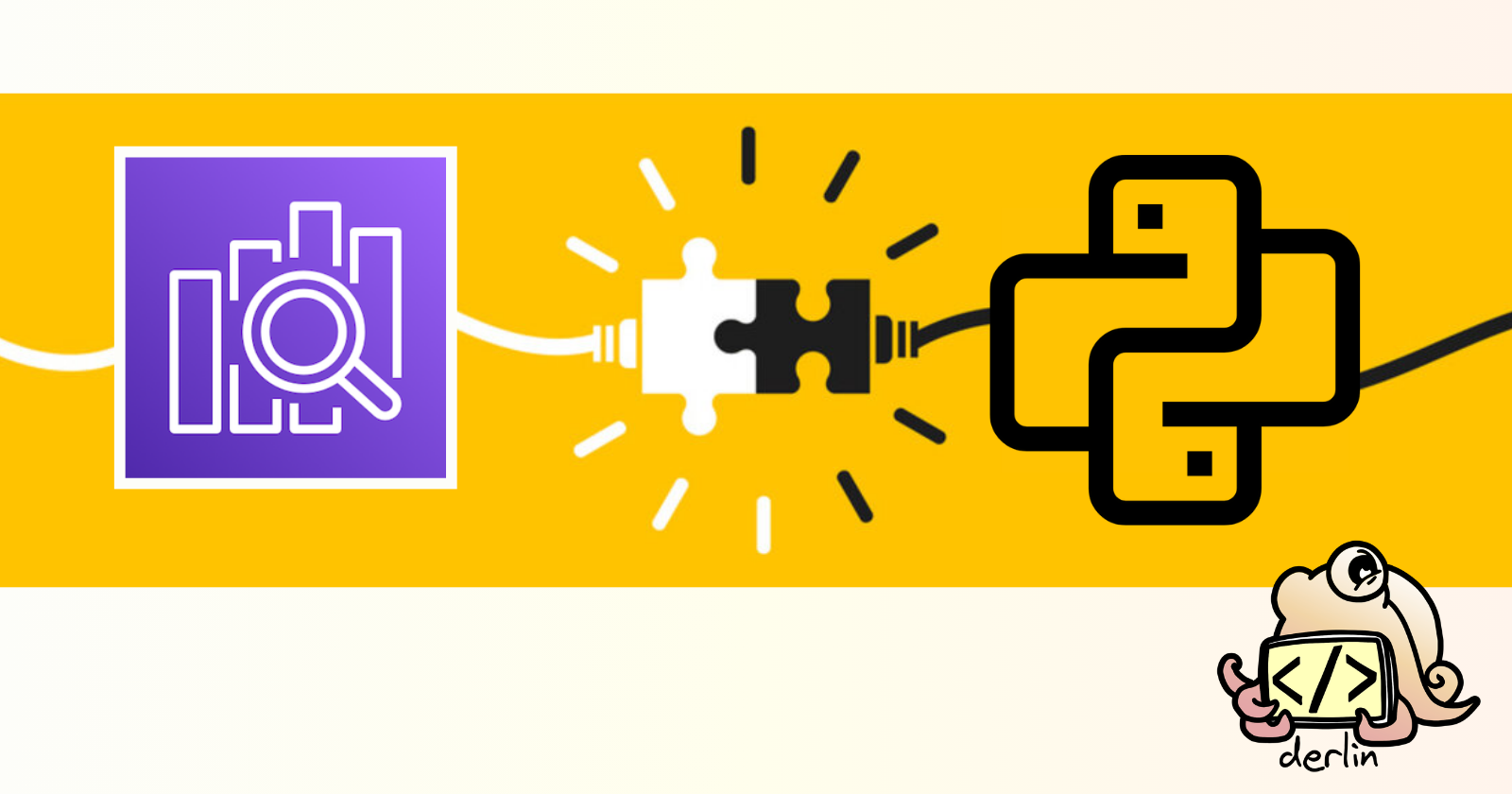How to connect to AWS OpenSearch or Elasticsearch clusters using python
 Lucy Linder
Lucy Linder
Connecting to an OpenSearch (ES) service running in AWS using Python is painful. Most examples I find online either don't work or are outdated, leaving me constantly fixing the same issues. To save time and frustration, here’s a collection of working code snippets, up-to-date as of December 2024.
Connect using the opensearch-py library (OpenSearch + ElasticSearch)
Connect using the elasticsearch library (ElasticSearch only)
Connect using the opensearch-py library (OpenSearch + ElasticSearch)
This is my preferred way of connecting to an ES instance managed by AWS. It works for both ElasticSearch and OpenSearch clusters, and the authentication can take advantage of AWS profiles.
Install opensearch-py and boto3 (for authentication):
pip install opensearch-py boto3
At the time of writing, this installs opensearch-py==2.8.0 and boto3==1.35.81.
Now, you can create a client using the following:
import boto3
from opensearchpy import (
AWSV4SignerAuth,
OpenSearch,
RequestsHttpConnection,
)
es_host = "search-my-aws-esdomain-5k2baneoyj4vywjseocultv2au.eu-central-1.es.amazonaws.com"
aws_access_key = "AKIAXCUEGTAF3CV7GYKA"
aws_secret_key = "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"
region = "eu-central-1"
# Note: you can also use boto3.Session(profile_name="my-profile") or other ways
session = boto3.Session(
aws_access_key_id=aws_access_key,
aws_secret_access_key=aws_secret_key,
region_name=region,
)
client = OpenSearch(
hosts=[{"host": es_host, "port": 443}],
http_auth=AWSV4SignerAuth(session.get_credentials(), region, "es"),
connection_class=RequestsHttpConnection,
use_ssl=True,
)
Note that boto3.Session supports various ways of creating a session: using a profile, environment variables, and more. I will let you check it out!
Once you have it, check the connection using:
client.ping() # should return True
client.info() # use this to get a proper error message if ping fails
To check indices:
# List all indices
client.cat.indices()
client.indices.get("*")
# Check the existence of an indice
client.indices.exists("my-index")
Connect using the elasticsearch library (ElasticSearch only)
⚠ 🔥 ⚠ This only works for ElasticSearch clusters! Connecting to an OpenSearch cluster raises
UnsupportedProductError: The client noticed that the server is not Elasticsearch and we do not support this unknown product
elasticsearch >= 8
RequestsHttpConnection (see next section), a class that was removed in elasticsearch 8.X. If you were googling for the error cannot import name 'RequestsHttpConnection' from 'elasticsearch’, you are at the right place!Install elasticsearch (this should install elastic-transport as well), and requests_aws4auth . The latter, based on requests, is required to handle authentication to AWS:
pip install "elasticsearch>=8" requests_aws4auth
At the time of writing, this installs elastic-transport==8.15.1, elasticsearch==8.17.0 and requests-aws4auth==1.3.1.
Now, you can create a client using the following:
from elastic_transport import RequestsHttpNode
from elasticsearch import Elasticsearch
from requests_aws4auth import AWS4Auth
es_endpoint = "search-my-aws-esdomain-5k2baneoyj4vywjseocultv2au.eu-central-1.es.amazonaws.com"
aws_access_key = "AKIAXCUEGTAF3CV7GYKA"
aws_secret_key = "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"
region = "eu-central-1"
es = Elasticsearch(
f"https://{es_host}",
http_auth=AWS4Auth(
aws_access_key,
aws_secret_key,
region,
"es",
),
verify_certs=True,
node_class=RequestsHttpNode,
)
Once you have it, check the connection using:
es.ping() # should return True
es.info() # use this to get a proper error message if ping fails
elasticsearch < 8
If you are still on an old version of elasticsearch:
pip install "elasticsearch<8" requests_aws4auth
Currently elasticsearch==7.17.12, requests-aws4auth==1.3.1.
Now, you can create a client using the following:
from elasticsearch import Elasticsearch, RequestsHttpConnection
from requests_aws4auth import AWS4Auth
es_endpoint = "search-my-aws-esdomain-5k2baneoyj4vywjseocultv2au.eu-central-1.es.amazonaws.com"
aws_access_key = "AKIAXCUEGTAF3CV7GYKA"
aws_secret_key = "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"
region = "eu-central-1"
es = Elasticsearch(
host=es_endpoint,
http_auth=AWS4Auth(
aws_access_key, aws_secret_key, region, "es"
),
use_ssl=True,
port=443,
verify_certs=True,
connection_class=RequestsHttpConnection,
)
Check the connection:
es.ping() # should return True
es.info() # use this to get a proper error message if ping fails
Subscribe to my newsletter
Read articles from Lucy Linder directly inside your inbox. Subscribe to the newsletter, and don't miss out.
Written by

Lucy Linder
Lucy Linder
I am a passionate woman fond of octopuses 🐙🐙 It took me a while to find my path, but as soon as I started programming, I knew it would define me for the rest of my life. I love everything that challenges my brain and can keep it interested. I was involved in projects in numerous domains, from quantum computing for particle physics to retail store interfaces. I don't know what I enjoy the most (as long as I can crunch code), so I try everything I come up with. Currently working as a software engineer / SRE, I always have ongoing side projects and try to give back to the community through open-source and tech platforms (dev.to, StackOverflow). Aside from my work, I love reading (especially time travel fiction) and spending time with other passionate people. To make the latter even easier, I co-founded the GDG Fribourg, which I hope you will check out if you are in Switzerland.